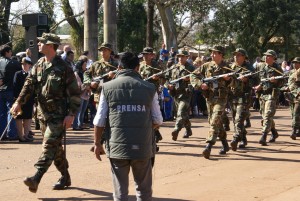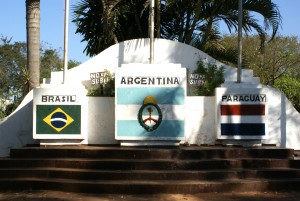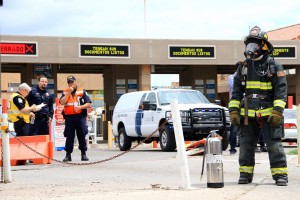My research focuses on security, crime, emergency management and the news media in Latin America. I examine the process of defining specific border areas as a threat to security, the effects securitization through policy, militarization, and media discourse have on local residents, and how, once put in place, the regime of security is re-negotiated among the actors involved on different geopolitical scales. Hemispheric initiatives, which address such diverse, yet interconnected phenomena as drug trafficking, contraband, guerilla and paramilitary violence, and gangs, marking them as threats to regional security, have often failed to reduce the rates of crime and violence across the continent; hence, I analyze the disjuncture between international and national security discourses and strategies, on the one hand, and citizen expectations, based on nuanced historical, cultural and economic circumstances, in locations throughout Latin America where they are applied, challenged and reconfigured, on the other.


From 2008 to 2014 I was conducting fieldwork in the Triple Frontier region between Argentina, Brazil and Paraguay. In this alleged haven of international organized crime, characterized by drug and human trafficking, contraband, and money laundering, I focus on the lived experiences of local journalists who are at the frontlines of making news and security. Based on ongoing ethnographic research, my book Savage Frontier: Making News and Security on the Argentine Border (University of California Press, 2015) traces how journalists who live and work on the insecure border translate the discourse of threats from the global to the local milieu, reconstitute security as a practical project, and tactically use the news to protect their community. I show that maneuvering the intricate knotting between security and news-making by selectively reporting on illegalized, yet legitimate activities, such as trafficking and contraband, the media challenge securitization and militarization of the border area.
In 2015 I started a new research project on the U.S.-Mexico border, entitled “Emergency Services During Heightened Border Security.” Here, I explore the everyday practices and experiences of first responders – firefighters, emergency medical technicians and paramedics – who work or volunteer for fire and rescue departments on both sides of the Arizona-Sonora border in order to expand our understanding of the human and social consequences of security policies and border enforcement. This research is supported by grants from the National Science Foundation (#1533968) and the Wenner-Gren Foundation.

In this project I ask: How do first responders confront the challenges of provisioning fire, rescue, and emergency medical services in contexts of heightened security? The case of emergency medical responders is intriguing and oftentimes problematic. As public service providers, they are street-level bureaucrats who work on the frontlines of the post-9/11 security state, facing political, legal and ethical collisions between the security of the communities where they live and work and their social-humanitarian responsibilities to saving lives. Professional ethics and healthcare laws require that first responders provide help without regard to the legal status of their patients, but as state actors they are also invested with political and symbolic functions of governmental authority and tightly integrated into the federal emergency preparedness and homeland security infrastructures. The study examines the relation between local governments and taxpayers that fund fire, rescue and emergency medical services, and federal and state governments, which set and implement national security, border control and immigration policies. The project will be instructive to EMS-related policy and regulatory efforts as they relate to both broader concerns about national security and public health.